The treatment at a glance
Tinnitracks lets you set up your own music and use it to treat your tinnitus. This allows you to target the cause of tinnitus in the brain instead of simply managing symptoms with your therapy. This is possible by means of the brain's lifelong ability to adapt, also known as neuroplasticity. Researchers at the University of Muenster developed a clinically proven therapy for chronic tinnitus based on the latest scientific innovations in brain research.
1
2
3
4
5
6
7
8
9
10
11
12
13
Therapy Basics
- Based on scientific findings
-
Therapeutic approach proven in
- Allows patients to treat tinnitus with their own music
- Tinnitracks makes this therapeutic approach accessible for you
Click here
Tinnitus - Ringing in the brain
Tinnitus is often referred to as “ringing in the ears.” This suggests that tinnitus is a problem that primarily concerns the ears. Neuroscientific findings in tinnitus research show that although tinnitus is usually linked to hearing loss, the processes that are behind the development as well as sustained occurrence of tinnitus symptoms actually take place within the structures of the brain.
14
15
Scientific knowledge of neuroplasticity in the brain, which is the basis for our ability to learn throughout our entire lives, has led to new therapeutic approaches in treating chronic tinnitus with music.
16
17
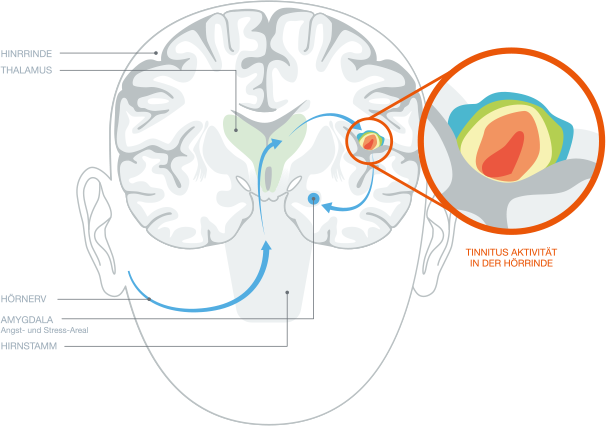
The new therapeutic approach
Tinnitracks lets you treat your tinnitus with your own music. The modified tracks are used for neurophysiologic treatment. How can your music be used as tinnitus therapy?
The cause of tinnitus
Abnormal hyperactivity of nerve cells in the brain’s auditory cortex that directly correlates with the perceived loudness of the tinnitus sound is found in patients with subjective tinnitus. The greater the activity in these cells, the louder the tinnitus.
1
2
10
Tinnitus is often triggered by hearing loss such as sudden sensorineural hearing loss or noise-induced hearing loss. This type of hearing loss not only means a reduced ability to hear sounds in the frequency ranges in which damage has occurred, but also causes a reduced flow of information to the brain's auditory center.
14
15
16
This change in input can cause the brain to shift its healthy balance between excitatory and inhibitory nerve signals. This can lead to overactivity in certain nerve cells, which manifests itself as tinnitus.
Treating tinnitus with filtered music
Tinnitus can be treated by listening to music that has been specially filtered to remove certain frequencies.
1
2
3
4
5
6
7
8
9
10
11
12
13
The music is filtered to remove the specific frequency that causes the patient's tinnitus. This creates an audible notch in the sound spectrum of your music. In other words, it slightly alters the sound. Your sense of hearing, however, is able to quickly adapt to this unfamiliar input.
This systematically changed input - generated by filtering your music based on your individual tinnitus frequency - can cause the brain to re-shift its imbalance between excitatory and inhibitory nerve signals in the auditory center back towards a healthy balance between the two.
The basic mechanism behind this is based on the specific configuration of nerve cells in the brain:
The nerve cells in the brain's auditory center are arranged by the frequency they perceive.
It can be likened to keys on a piano: The low tones are on one end, the high tones on the other.
This allows a mechanism known as lateral inhibition to kick in. Lateral inhibition is a natural property found in nerve cells that regulates the degree of contrasts: When a nerve cell is activated, lateral (from the side) inhibition reduces the activity of other neighboring cells.
18
19
20
21
The therapy takes advantage of these nerve cell properties:
When you listen to the filtered music, you are able to specifically target and stimulate nerve cells that are outside of your tinnitus frequency.
This allows lateral inhibition to reduce the abnormal hyperactivity in the auditory cortex's nerve cells that are causing tinnitus and thereby provide relief.
1
2
3
4
5
6
7
8
9
10
11
12
13
Tinnitracks allows you to select your own music and use it to treat your tinnitus. Using your own favorite musical pieces is especially beneficial as a training method, since you are also able to trigger positive emotions while using your sense of hearing and release dopamine, a neurotransmitter that helps the brain to learn.
22
23
24
Recognize its therapeutic potential - Select your music
Tinnitracks allows you to transform your favorite music for your therapy.
However, since songs have various spectral profiles, not all music tracks are equally well-suited for treating your individual tinnitus.
This is especially important to remember if your tinnitus frequency is relatively high, as most music tends to have relatively low spectral power in those frequency ranges. Tinnitracks will analyze the music you select to determine its potential for therapeutic use:
Broadly speaking, music suitable for therapy has high power in the frequency ranges that are above and below the patient's individual tinnitus frequency. Ideally, the power should be distributed over both stereo channels as equally as possible for the entire duration of the track. The combination of the music spectral qualities and the patient's individual tinnitus frequency will be assessed for each track using a neuro-acoustic model. Tinnitracks will then determine the therapeutic potential of each track.
This unique and effective analysis of the therapeutic potential allows you to immediately detect whether any of the music files you selected are less suitable for your therapy. The brain's auditory center should only be trained with the appropriate audio material so that the physiological mechanism known as lateral inhibition can be used as effectively as possible.
Patient profile
Tinnitracks is suitable for tinnitus with the ENT doctor's diagnosis:
- subjective,
- chronic,
-
tonal with a stable tinnitus frequency
(200 Hz - 20 kHz).
-
hearing loss less than 60 dB HL
(½ octave below the tinnitus frequency).
Click here
Scientific basis of Tinnitracks
The Tinnitracks solution is based on research in the fields of neurophysiology and neuroacoustics. Tinnitracks uses findings from neuroscientific studies performed at the Institute for Biosignal Analysis and Biomagnetism by the medical faculty of the University of Muenster.
1
2
3
5
6
7
8
9
10
11
12
13
Placebo-controlled studies performed there showed that music that has had certain frequencies removed can be used to achieve a statistically significant reduction in the perceived loudness of tinnitus, in tinnitus activity in the nerve cells, and in the psychological strain tinnitus patients suffer.
Tinnitracks implements these findings into a contemporary application with modern information technology. This allows a large number of patients to benefit from this therapeutic approach founded on neuroscience.
Sources
Clinical studies and medical reviews
-
1
Okamoto, H., Stracke, H., Stoll, W., & Pantev, C. (2010). Listening to tailor-made notched music reduces tinnitus loudness and tinnitus-related auditory cortex activity. Proceedings of the National Academy of Sciences of the United States of America, 107(3), 1207–1210.
http://www.ncbi.nlm.nih.gov/pubmed/20080545
-
2
Stracke, H. , Okamoto, H., Pantev, C.( 2010). Customized notched music training reduces tinnitus loudness. Communicative integrative biology, 3(3), 274–277.
http://www.ncbi.nlm.nih.gov/pmc/articles/PMC2918775/
-
3
Wilson, E., Schlaug, G., & Pantev, C. (2010). Listening to filtered music as a treatment option for tinnitus: A review. Music perception, 27(4), 327–330.
http://www.ncbi.nlm.nih.gov/pubmed/21170296
-
4
Lugli, M., Romani, R., Ponzi, S., Bacciu, S., & Parmigiani, S. (2009). The windowed sound therapy: a new empirical approach for an effective personalized treatment of tinnitus. The international tinnitus journal, 15(1), 51–61.
http://www.ncbi.nlm.nih.gov/pubmed/19842347
-
5
Pantev, C., Okamoto, H., & Teismann, H. (2012). Music-induced cortical plasticity and lateral inhibition in the human auditory cortex as foundations for tonal tinnitus treatment. Frontiers in systems neuroscience, 6(June), 50.
http://www.ncbi.nlm.nih.gov/pubmed/22754508
-
6
Pantev, C., Okamoto, H., & Teismann, H. (2012). Tinnitus: the dark side of the auditory cortex plasticity. Annals of the New York Academy of Sciences, 1252(1), 253–8.
http://www.ncbi.nlm.nih.gov/pubmed/22524367
-
7
Teismann, H., Okamoto, H., & Pantev, C. (2011). Short and intense tailor- made notched music training against tinnitus: the tinnitus frequency matters. PloS one, 6(9), e24685.
http://www.ncbi.nlm.nih.gov/pubmed/21935438
-
8
Pape, J., Paraskevopoulos, E., Bruchmann, M., Wollbrink, A., Rudack, C., & Pantev, C. (2014). Playing and listening to tailor-made notched music: Cortical plasticity induced by unimodal and multimodal training in tinnitus patients. Neural Plasticity. 2014:516163.
http://www.ncbi.nlm.nih.gov/pubmed/24895541
-
9
Teismann, H., Wollbrink, A., Okamoto, H., Schlaug, G., Rudack, C., & Pantev, C. (2014). Combining transcranial direct current stimulation and tailor-made notched music training to decrease tinnitus-related distress - a pilot study. PloS One 9, e89904.
http://www.ncbi.nlm.nih.gov/pubmed/24587113
-
10
Stein, A., Engell, A., Junghoefer, M., Wunderlich, R., Lau, P., Wollbrink, A., Rudack, C., & Pantev, C. (2015). Inhibition-induced plasticity in tinnitus patients after repetitive exposure to tailor-made notched music. Clinical Neurophysiology, S1388-2457(14)00473-8.
http://www.ncbi.nlm.nih.gov/pubmed/25441152
-
11
Stein, A., Engell, A., Lau, P., Wunderlich, R., Junghoefer, M., Wollbrink, A., Bruchmann, M., Rudack, C., & Pantev, C. (2015). Enhancing inhibition-induced plasticity in tinnitus--spectral energy contrasts in tailor- made notched music matter. PloS One 10, e0126494.
http://www.ncbi.nlm.nih.gov/pubmed/25951605
-
12
Wunderlich, R., Lau, P., Stein, A., Engell, A., Wollbrink, A., Rudack, C., & Pantev, C. (2015). Impact of Spectral Notch Width on Neurophysiological Plasticity and Clinical Effectiveness of the Tailor-Made Notched Music Training. PloS One 10, e0138595.
http://www.ncbi.nlm.nih.gov/pmc/articles/PMC4583393/
-
13
Stein, A., Wunderlich, R., Lau, P., Engell, A., Wollbrink, A., Shaykevich, A., Kuhn, J.-T., Holling, H., Rudack, C., & Pantev, C. (2016). Clinical trial on tonal tinnitus with tailor-made notched music training. BMC Neurol. 16, 38.
http://www.ncbi.nlm.nih.gov/pubmed/26987755
-
14
Eggermont, J.J., & Roberts, L.E. (2012). The neuroscience of tinnitus: understanding abnormal and normal auditory perception. Front. Syst. Neurosci. 6: 53.
http://www.ncbi.nlm.nih.gov/pubmed/22798948
-
15
Weisz, N. (2013). Aktuelle Trends aus der neurowissenschaftlichen Tinnitus-Forschung und deren klinische Implikationen. Tinnitus-Forum, 17(1), 18–21.
http://www.tinnitusresearch.org/en/documents/downloads/TF_1_13_wissenschaft.pdf
-
16
Møller, A. (2011). The Role of Neural Plasticity in Tinnitus. In A. Møller, B. Langguth, D. de Ridder, & T. Kleinjung (Eds.), Textbook of Tinnitus (pp. 99–102). New York: Springer.
http://dx.doi.org/10.1007/978-1-60761-145-5
-
17
Weisz, N., & Langguth, B. (2010). [Cortical plasticity and changes in tinnitus: treatment options]. HNO, 58(10), 983–9.
http://www.ncbi.nlm.nih.gov/pubmed/20821181
Neuroscientific research
-
18
Pantev, C., Wollbrink, A., Roberts, L.E., Engelien, A., & Lütkenhöner, B. (1999). Short-term plasticity of the human auditory cortex. Brain Res. 842, 192–199.
http://www.ncbi.nlm.nih.gov/pubmed/10526109
-
19
Pantev, C., Okamoto, H., Ross, B., Stoll, W., Ciurlia-Guy, E., Kakigi, R., & Kubo, T. (2004). Lateral inhibition and habituation of the human auditory cortex. Eur. J. Neurosci. 19, 2337–2344.
http://www.ncbi.nlm.nih.gov/pubmed/15090060
-
20
Okamoto, H., Kakigi, R., Gunji, A., & Pantev, C. (2007). Asymmetric lateral inhibitory neural activity in the auditory system: a magnetoencephalographic study. BMC Neurosci. 8, 33.
http://www.ncbi.nlm.nih.gov/pubmed/17509141
-
21
Stein, A., Engell, A., Okamoto, H., Wollbrink, A., Lau, P., Wunderlich, R., Rudack, C., & Pantev, C. (2013). Modulatory effects of spectral energy contrasts on lateral inhibition in the human auditory cortex: an MEG study. PLoS One, 8(12):e80899.
http://www.ncbi.nlm.nih.gov/pubmed/24349019
-
22
Menon, V., & Levitin, D. J. (2005). The rewards of music listening: response and physiological connectivity of the mesolimbic system. NeuroImage, 28, 175–84.
http://www.ncbi.nlm.nih.gov/pubmed/16023376
-
23
Koelsch, S. (2014) Brain correlates of music-evoked emotions. Nat Rev Neurosci. 2014 Mar;15(3):170-80.
http://www.ncbi.nlm.nih.gov/pubmed/24552785
-
24
Yagishita, S., Hayashi-Takagi, A., Ellis-Davies, G.C., Urakubo, H., Ishii, S., & Kasai, H. (2014). A critical time window for dopamine actions on the structural plasticity of dendritic spines. 26;345(6204):1616-20.
http://www.ncbi.nlm.nih.gov/pubmed/25258080




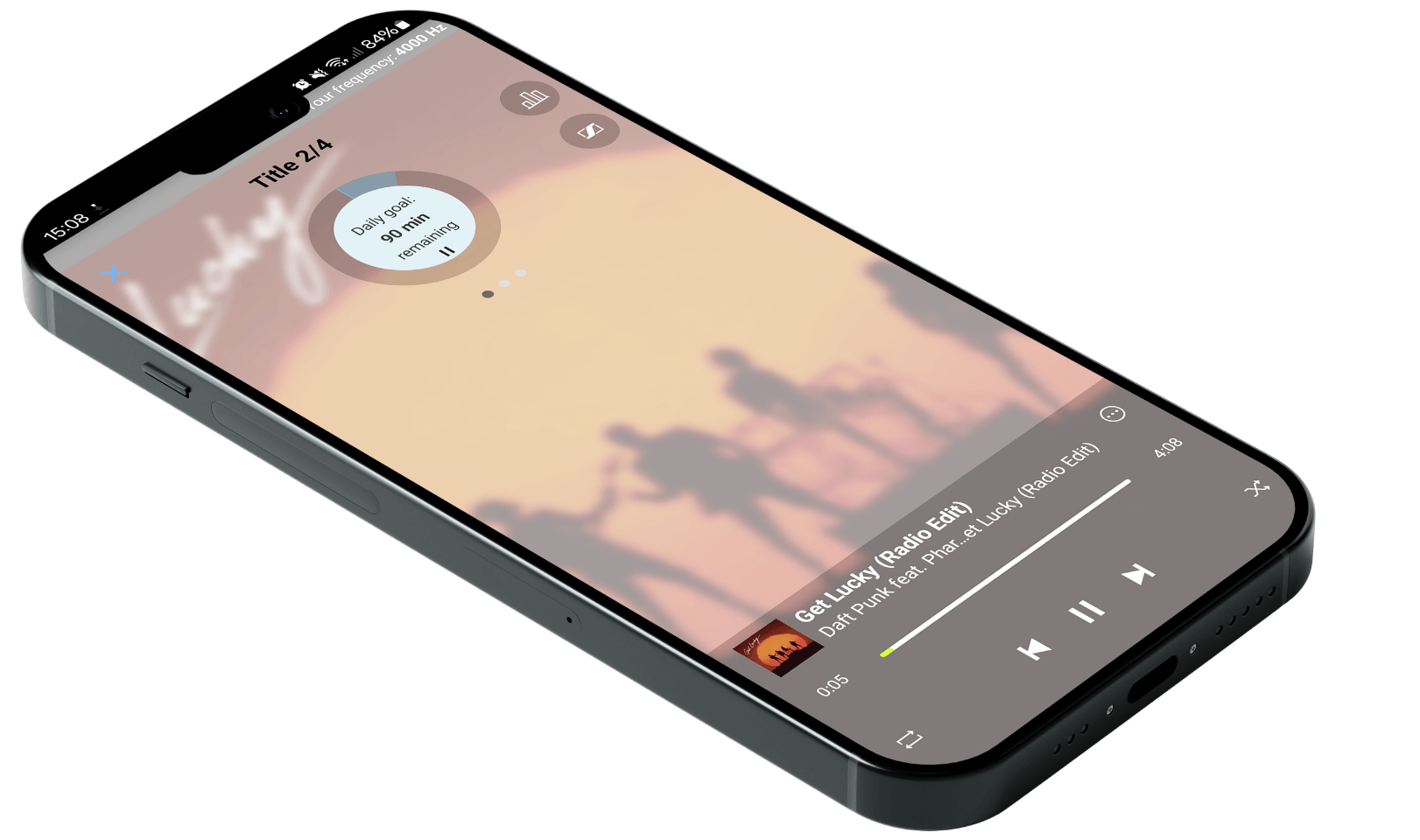

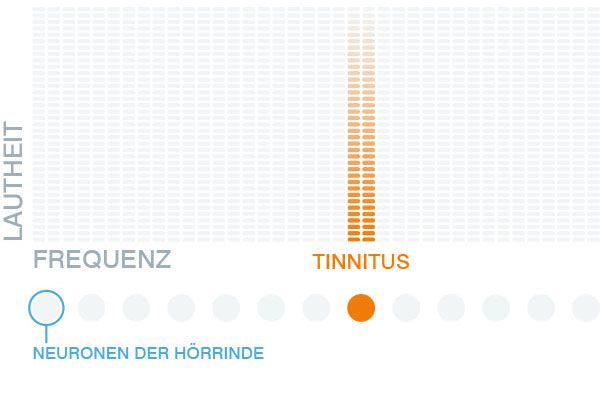
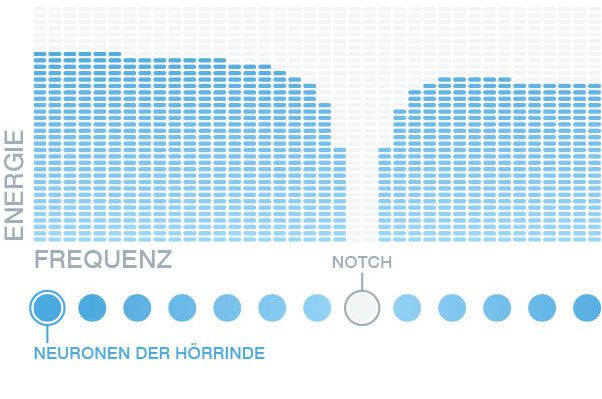
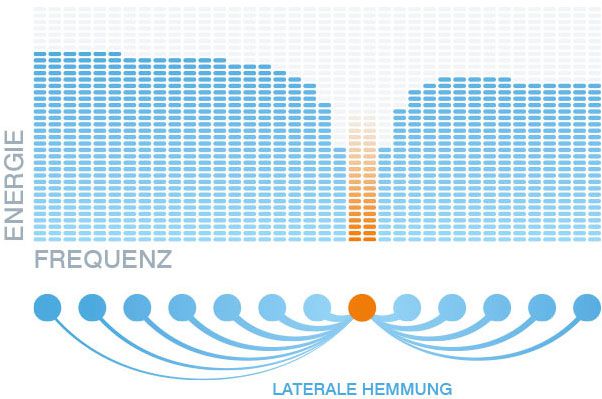
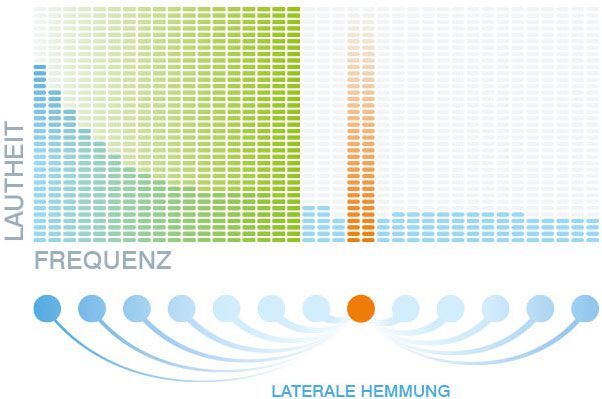



 Tinnitracks Basis-Therapie
Tinnitracks Basis-Therapie